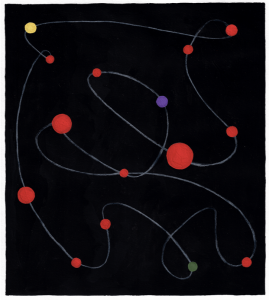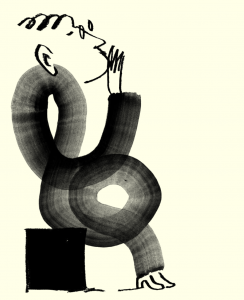Veteran war reporter Janine di Giovanni reflects on how the barbaric methods employed by ISIS has changed the rules of reporting

When I began reporting in the Middle East in the early 1990s, Saddam Hussein had just erased the border between Iraq and Kuwait. There was an uprising in the West Bank and Gaza, known as the First Intifada, in which Palestinian youths were waging a revolution by throwing stones and burning tires. The Lebanese Civil War, which killed 200,000 people, had just officially ended.
But in terms of being a reporter, there was no ISIS. There were radical Palestinian factions, there was Hezbollah and there were the first strains of some of the Jihadist groups that are on today’s political landscape, but beheading burning people alive in cages for the benefit of YouTube viewers, and recruitment, seemed unimaginable.
I remember, literally, hitchhiking to Gaza. “They leave women alone because they are too freaked out to deal with you,” an older, wiser, reporter told me. It was not that I felt particularly safe in Gaza or the West Bank – kidnapping, after all, was rife in Lebanon. I just felt, perhaps naively, that there were some human standards that were adhered to. Reporters, at any rate, even if disliked, were more or less off limits. That all changed during the Bosnian War when we had price tags over our heads from rivalling militias.
It was a big learning curve for me, working in the Middle East, abiding mores and taboos, covering my head and arms and legs, and learning to listen carefully and absorb the complex and multifaceted political landscape. But while I worried about my car being sling-shotted by a random rock, I never thought about being beheaded.
This gave me the freedom to move from villages, to spend days or weeks with what would now be considered dangerous terrorists, to observe how revolutions were made firsthand. In retrospect, I can’t believe how lucky I was to have had that time. For a young reporter to learn such skills now is impossible. You can’t get access to ISIS, or even to al-Nusra, the al-Qaeda franchise in Syria.
It limits the scope of what we can and cannot do as reporters. In Aleppo a few years back, I met the young Steve Sotloff, an American writer, whose name is now synonymous with ISIS. Steve had studied Arabic in Yemen, was living in Benghazi, Libya and had come to Syria to report on the conflict. He was funny, young and highly intelligent. He was Jewish and had studied in Israel, but we did not know that then, and he managed to keep it from his kidnappers for some time, later on down the road.
We kept in close touch over the next year, and shortly before he was kidnapped, he asked me to join him in Aleppo on a working trip (journalists buddy up for financial, as well as safety, reasons). Something told me it was not the time to go. I rely heavily on my instinct – as well as local security reports – to judge when a trip is less safe than others. And perhaps more importantly, it was August and I wanted to go on holiday with my son.
A few days later, I got a message from Steve on Facebook messenger – his favourite means of communication – but it was not from him. It was from another colleague, Barak Barfi, telling me “Steve has gone dark”, meaning he was missing. We all knew what that meant.
Jim Foley, the kind-hearted former Catholic altar boy from New Hampshire, had been missing since the previous Thanksgiving Day, along with a handful of other reporters we all knew, or knew about. As a group of close colleagues, we monitored and did our best to try to get information that might lead to their release. Since both Foley and Sotloff were Americans, there was no chance the US would allow money to pass hands for their release – which is what ISIS wants. They have an intricate and far-reaching financial system that thrives on ransom fees, oil and extortion.
Although they deny it, the French government paid for their hostages to be released, and journalists who were in the same cell with Foley and Steve were set free. I often imagine what it would have been like for the two of them, Jim and Steve, waiting in the dark cell, beaten and degraded, and trying to keep hope alive that perhaps there was some way their lives would be spared. I wonder if they had hope until the last minute. When did they realise they were really going to die? I hope they never had that thought. I hope it went quickly for them, without pain, and most of all, without fear. But I know that is dreaming, that both of them must have experienced the unimaginable: a man with a British accent holding a knife to your throat, about to saw your head off.
Jim was beheaded first, then Steve. I did not watch the videos, but I saw the photographs of them, kneeling in the Syrian Desert, a long, long way from home, in their orange jumpsuits. Jim died on August 19, 2014. Jihadi John stands behind him with his knife. People who watched the video say that at the moment the knife began to cut into him, Jim did not pull or look away. Perhaps that was the only control he then had – to show his kidnappers he was undefeated.
Steve’s time came a few weeks later. I wonder what was going through his head when Jim did not come back to his cell, and he must have known his time would come soon. It is said that the cruellest thing ISIS does is lead their prisoners out countless times to do mock executions – so that when the real time comes, they are never quite sure.
Before he was murdered, Steve was forced to give a recorded message, which showed the greed and cruelty of the ISIS operation. It was all about getting the ransom fee:
“Obama, your foreign policy of intervention in Iraq was supposed to be for the preservation of American lives and interests, so why is it that I am paying the price of your interference with my life. Am I not an American citizen? You’ve spent billions of US tax payers’ dollars and we’ve lost thousands of our troops in our previous fighting against the Islamic State. So where is the people’s interest in reigniting this war?”
Then they killed him. ISIS has changed everything in the way that my colleagues and I now report, but also in the way that we think, and the risks that we take in search of a story, or trying to tell the truth. In New York this week, I briefed diplomats and other regional experts about the current situation in Syria. What I talked about was mainly ISIS. How ISIS has changed – not only the political landscape, making the possibility of peace and negotiations that much harder – but also the journalistic one. My concerns now are, how ISIS is funded, where they are getting their money from and the hierarchy and structure of their organisation. And their interests. What do they really want? What will they concede? Are they the viable future?
A diplomat recently told me to look to history and the Mahdi army fighting General Gordon’s troops in Sudan in the 1880s to understand them. “It’s the same thing,” he said. But it is not. The Mahdi army was in Sudan. ISIS is everywhere: from the frustrated Tunisian youths I interview who are signing up to fight in Syria, to the disenfranchised French and British who envisage a more pure world in the Caliphate, and rush to fight, and to live in Raqqa. And America is sending its share of fighters. But, more importantly, the franchises of ISIS are growing globally. All I can think of is something that a Tunisian rapper told me after his brother had been killed fighting in Syria. “They promise you heaven,” he said, “but heaven is not theirs to give”.
This article was first published in issue 17 of PORT. To buy or subscribe to PORT, click here.




